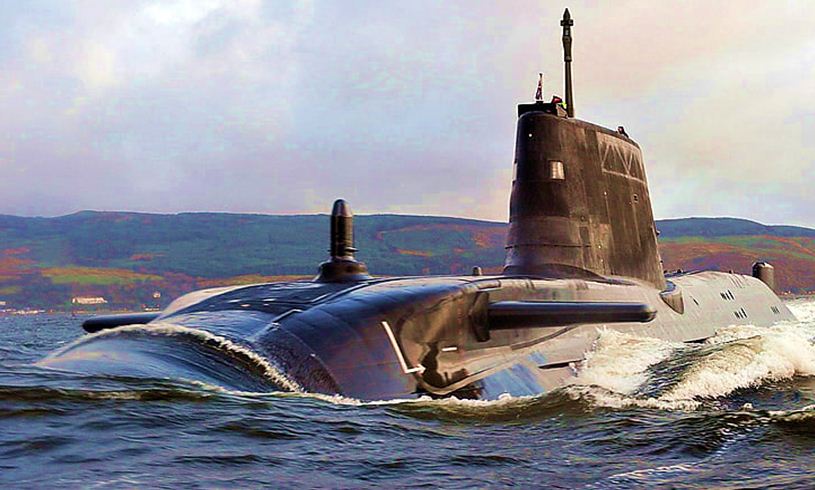 |
| Top 10 best submarines in the world |
Militarymedia.net | Which is the best attack submarine in the world? Which are the largest and deadliest modern attack submarines and why? Our Top 10 analysis is based on a combined score of offensive weapons, stealth, and several other features.
The main mission of this type of ship is to attack enemy submarines and ships. It must have good sonar to detect enemy submarines. It is also very important for these ships to approach enemy ships and warships undetected. After the battle, it is even more important to leave the area undetected by hostile anti-submarine ships and maritime patrol aircraft. Some of the newest attack submarines can launch cruise missiles against ships and land targets. So stealth and weaponry are the main factors that determine which attack submarine is the best.
This list includes only nuclear-powered attack submarines, which are currently in service worldwide. Boats that are still under development or under construction are not here.
Currently the 10 best submarines in the world are as follows:
Sea Wolf Class (USA)
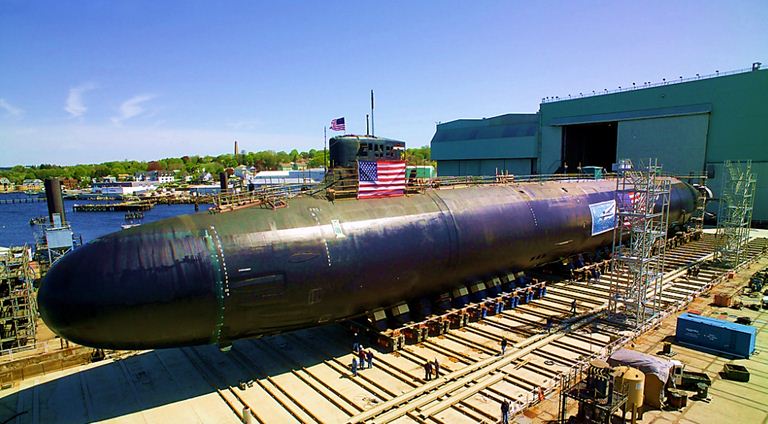 |
| Sea Wolf Class |
The Seawolf class ships are the most advanced but also the most expensive hunter-killer submarines in the world. These submarines were intended to restore the technological advantage the US Navy had enjoyed over the Soviets from 1945 until the mid-1980s, when the espionage and cynical trading practices of some US allies somewhat eroded them.
The Seawolf class ships were intended to locate and destroy the latest Soviet ballistic missile submarines, such as the Typhoon class, and the latest attack submarines such as the Akula class.
Initially 12 ships of the class were planned. Yet these state-of-the-art submarines are too expensive even for the United States to build and maintain on a post-Cold War era budget. Eventually production was halted with only three Seawolf-class submarines built. All of these ships are currently in service. The US Navy switched to a much cheaper Virginia-class attack submarine design.
The Seawolf-class submarines are arguably the quietest submarines the world has ever built. It is very quiet even at high speed. Most submarines need to maintain a speed of up to 5 knots to avoid detection by passive sonar arrays, while the Seawolf class is credited for being capable of sailing at 20 kots and still being impossible to find. A Seawolf at 25 knots makes less noise than an older Los Angeles-class submarine strapped to the dock.
These vessels can operate at greater depths than existing US submarines and can also operate under the polar ice caps. Also it is faster than most other submarines.
The submarine has eight 660 mm torpedo tubes. This tube is used to launch Mk.48 torpedoes and Sub-Harpoon anti-ship missiles. Torpedo tubes are also used to launch Tomahawk land attack cruise missiles with a range of 1,700 km. A mix of 50 torpedoes, Sub Harpoons and Tomahawks can be carried.
Class Virginia (USA)
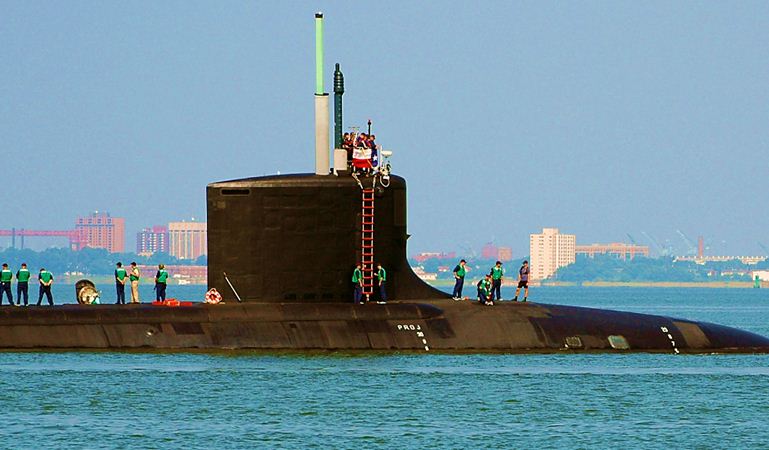 |
| Class Virginia |
The US Navy's Virginia-class nuclear-powered attack submarines are the successors to the Los Angeles-class ships. The Virginia class was designed as a smaller, cheaper, and more versatile alternative to the sophisticated but very expensive Seawolf class. A total of 30 Virginia-class nuclear-powered attack submarines are planned.
The Virginia-class submarines incorporate a newly designed anechoic coating, isolated deck structure and a new propulsor design to achieve a low acoustic signature. It is said that Virginia's noise level is the same as the Seawolf class.
The Virginia-class submarines are equipped with 12 Vertical Launch System (VLS) tubes. It is used to launch Tomahawk land attack cruise missiles with a range of 1,700 km. There are also four 533 mm torpedo tubes. It is used to fire a total of 26 Mk.48 heavyweight torpedoes and Sub-Harpoon anti-ship missiles.
These boats can also be used for special operations. It is the first US submarine to use a built-in Navy SEAL staging area that allows teams of 9 people to enter and leave the submarine.
Astute Class (United Kingdom)
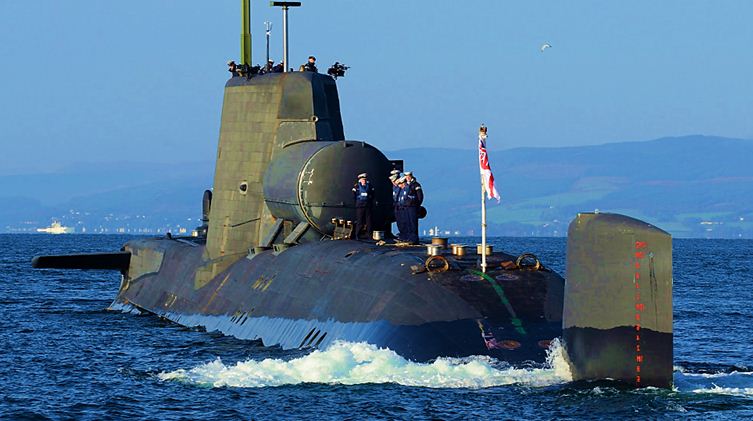 |
| Astute Class |
The first Astute class nuclear-powered attack submarine was commissioned with the Royal Navy in 2010. So far 7 ships of the class are planned. It will replace the older Swiftsure-class attack submarines.
The Astute class ships are highly stealthy and carry more weapons than the previous Trafalgar class ships.
The attack submarine is equipped with six 533 mm torpedo tubes. It is used to launch Spearfish torpedoes, Sub-Harpoon anti-ship missiles and Tomahawk cruise missiles. A mix of 36 missiles and torpedoes were carried.
The Tomahawk Block IV ground attack cruise missile has a range of 1,700 km and can target enemy ships as well as ground targets.
Graney Class (Russia)
 |
| Graney Class (Russia) |
The Project 885 Yasen (Western designation of the Graney class) is Russia's newest nuclear-powered attack submarine. The lead ship, the Severodvinsk, was laid down in 1993 but construction was halted due to funding problems. This ship was commissioned with the Russian Navy only in 2013. The second ship of this class was built for a better project. Currently at least 6 such ships are planned to be commissioned. It will replace the older Akula class submarines.
Despite all the improvements, the Graney-class ships are only slightly quieter than the upgraded Akula-class ships.
Severodvinsk has 24 vertical launch tubes for various cruise missiles. These included the P-800 Oniks (Western designation SS-N-26), which had a range of about 300 km.
There are also eight 650 mm torpedo tubes. It can launch torpedoes and anti-ship missiles. It was reported that a mix of 30 torpedoes and anti-ship missiles were carried.
Severodvinsk has 24 vertical launch tubes for various cruise missiles. Cruise missiles include the P-800 Oniks (SS-N-26), which has a range of about 300 km.
Class Sierra II (Russia)
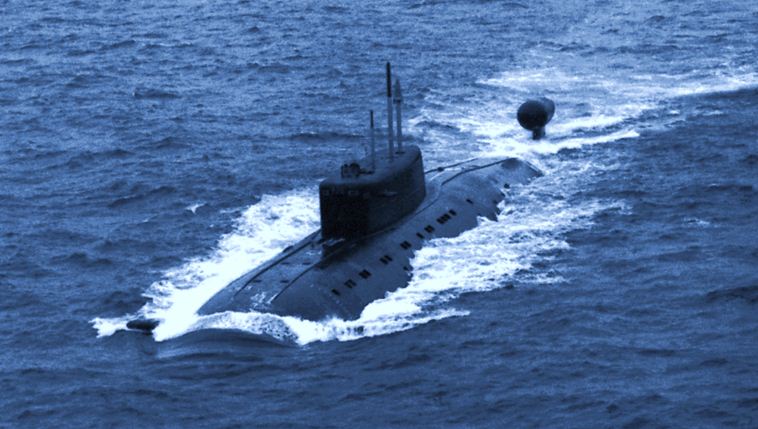 |
| Class Sierra II |
Russia's expensive Sierra I class ships replaced the ill-fated Alfa class. Shortly thereafter, the more capable Sierra II class ships were commissioned. The first Sierra II class ship was commissioned in 1990 and a second ship of the class followed in 1993. Only two Sierra II class ships were ever commissioned due to their extremely high prices. A third boat was laid down, but never commissioned and eventually cancelled. The Russian Navy maintains these advanced submarines despite their high operating costs.
These ships have two lightweight and strong titanium hulls. Soviet titanium technology was much more advanced than the West, requiring fewer passes to achieve a successful weld, but the cost of the hull limited the number made, despite advantages in underwater depth and speed.
These submarines can operate at great depths. Their operational depth is 520 meters, while the maximum depth is 750 meters. Most other attack submarines, such as the Russian Akula class or the American Virginia class operate at depths of only about 250 meters. Not even America's most advanced Seawolf class ship could dive that deep.
Upgrade class Los Angeles (USA)
 |
| Upgrade class Los Angeles |
The US Navy currently operates about 40 of the older Los Angeles-class submarines along with the newer Seawolf and Virginia-class vessels. The submarine proved to be an excellent anti-submarine platform. The first ship of the upgraded Los Angeles class was commissioned back in 1988.
The upgraded submarines are much quieter than the original Los Angeles-class ships. It is explained that the upgraded Los Angeles class ships are 7 times quieter than the original Los Angeles class ships.
This class has a very powerful weapons array, including Mk.48 torpedoes, Sub-Harpoon anti-ship missiles and Tomahawk land attack cruise missiles. The Tomahawk missile can be launched from a special vertical launch system or from a torpedo tube.
These ships can operate under ice where Russian ballistic missile submarines tend to hide.
Akula Class (Russia)
 |
| Akula Class |
In the late 1980s the Soviet Union launched a number of Akula-class ships. This class marked a significant improvement in Soviet submarine design as it was much quieter than previous Soviet nuclear-powered attack ships. Furthermore the Akula class was much quieter than the Western countries expected. The use of commercially available Western technology to reduce noise levels played a critical role in eroding NATO's long-standing advantage in the underwater Cold War.
The upgraded Akula II class ships became the first Soviet submarines that were actually quieter than the newest US attack submarines of the time, especially the upgraded Los Angeles class ships. Sensors are also much better compared to previous Soviet attack submarines.
These ships have four 650 mm torpedo tubes and four 533 mm tubes. Up to 40 torpedoes and missiles can be carried.
Today the Akula-class ships make up about half or less of the Russian fleet for nuclear-powered attack submarines.
Soryu Class (Japan)
 |
| Soryu Class |
The first Soryu-class ships were commissioned with the Japan Maritime Self-Defense Force in 2009. Unlike other nuclear-powered ships on this list, the Soryu-class submarines have diesel-electric propulsion. The boats are equipped with an air-independent propulsion system which allows them to remain submerged for a longer time without surfacing to charge the batteries. Submersion resistance increases day by week. Japan is the only country to use ships of this class, as the other diesel-electric submarines are intended for littoral and patrol operations. The air-independent propulsion system of the Soryu class enhances the stealth and operational capabilities of these ships. But these submarines lack the range and endurance of nuclear-powered attack submarines.
The Soryu class submarines have a hydrodynamic design and are equipped with an anechoic coating. The hard components inside this boat also have sound insulation.
Another drawback of this Japanese ship is that it does not have a vertical launch system for anti-ship and ground attack missiles. Their armament is limited to torpedoes and Sub-Harpoon anti-ship missiles, which are launched via torpedo tubes.
Ohio Class (USA)
 |
| Ohio Class |
The Ohio-class submarines were originally designed to carry intercontinental ballistic missiles and are classified as SSBNs. But between 2002 and 2008 the US Navy converted the 4 oldest Ohio-class submarines into cruise missile carriers - the SSGN. Basically ballistic missiles were replaced by cruise missiles. The conversion of the first ship was completed in 2006.
Ohio, Michigan, Florida and Georgia were converted into guided-missile submarines by replacing the Trident 2 intercontinental ballistic missile with 7 smaller Tomahawk cruise missiles. Each converted SSGN is capable of carrying 154 Tomahawk cruise missiles. Such numbers of cruise missiles are usually used in surface combat groups.
These ships also have four 533 mm torpedo tubes for Mk.48 torpedoes. The converted Ohio-class submarines also have lockout bays and can carry special forces personnel.
Oscar II Class (Russia)
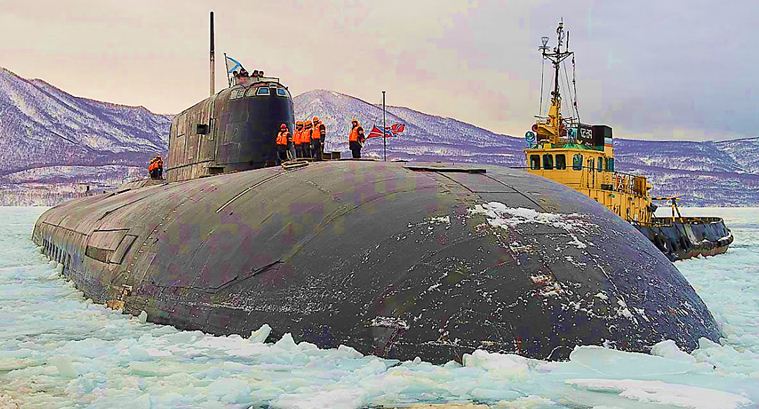 |
| Oscar II Class |
The Project 949A Antey, commonly known in the West as the Oscar II class, is a Soviet/Russian nuclear-powered cruise missile submarine (SSGN). It is the third largest submarine ever built in terms of displacement and length. Only the Soviet Typhoon-class and American Ohio-class ships were larger. Also originally this was the largest attack submarine ever built. Currently it is one of the most capable Russian submarines.
It was originally planned that 19 of these ships would be built. However only 11 ships were eventually completed. Currently 4 ships of this class remain in active service with the Russian Navy.
By modern standards, these boats are far from stealthy. But this Russian submarine has a formidable punch. The Soviets designed these giant cruise missile ships to attack US carrier battle groups and coastal installations.
The Oscar II class SSGN is armed with 24 P-700 Granit (Western designation SS-N-19 Shipwreck) supersonic cruise missiles with a range of 550 km.
The submarine is also equipped with two 650 mm and four 533 mm torpedo tubes, capable of launching torpedo and anti-ship missiles. These include the SS-N-16 Stallion anti-ship missile with a range of 50 km, carrying torpedoes, nuclear warheads or nuclear depth payloads for use against enemy ships or submarines.
#Tag
Are there any nuclear powered submarines in the world?
Which is the sixth biggest submarine in the world?
What is the best class of submarine to buy?
What are the different types of submarines in the US Navy?









